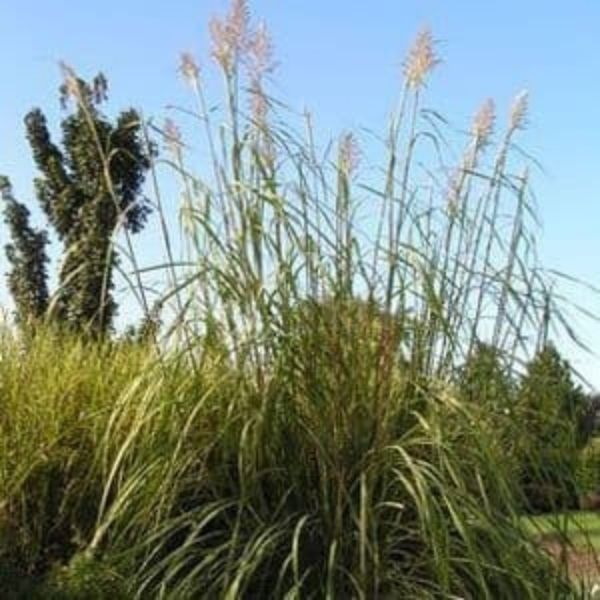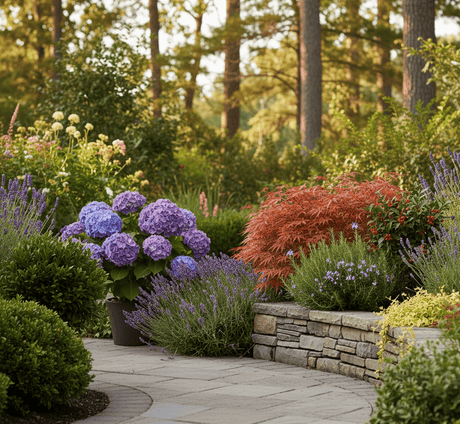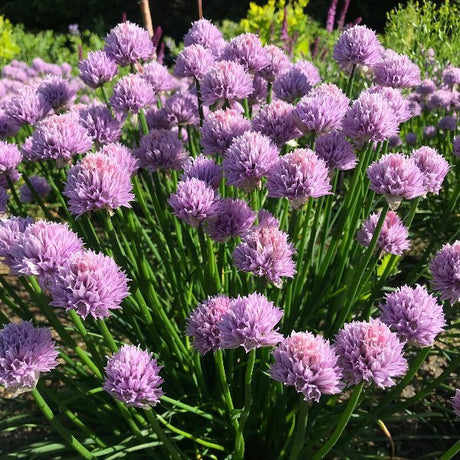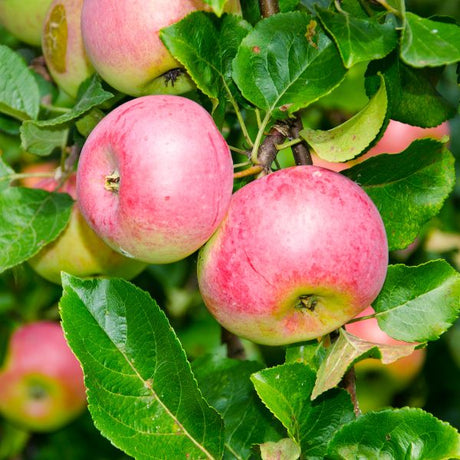Northern Pampas Grass
Tripidium ravennae
Plant Sentry™
Plant Sentry™

Plant Sentry™ Protected
Your order is protected by our compliance system that:
- Prevents restricted plants from shipping to your state
- Ensures plants meet your state's agricultural requirements
- Protects gardens from invasive pests and diseases
Delivery and Shipping
Delivery and Shipping
Delivery and Shipping
Fast, Safe Plant Delivery
Ships in 3-4 business days • Tracking provided • Weather protected
| Under $50 | $9.99 |
| $50 - $99.99 | $14.99 |
| $100 - $149.99 | $16.99 |
| $150 - $198.99 | $24.99 |
| $199+ | FREE |
✓ Zone-specific timing • ✓ Professional packaging • ✓ Health guarantee
Understanding Plant Options
Nature Hills offers plants in two main formats:
- Container Plants: Grown in pots with soil, sized by container volume and plant age
- Bare Root Plants: Dormant plants without soil, sized by height measurements
Container Plant Sizes
Container sizes indicate plant age and growing capacity rather than liquid volume equivalents. Our containers follow industry-standard nursery "trade gallon" specifications, which differ from standard liquid gallon measurements.
Young Plants (6 months to 18 months old)
| Container Size | Actual Volume | Metric Equivalent |
|---|---|---|
| 2" x 2" x 3" | 0.18 - 0.21 dry quarts | 0.20 - 0.23 dry liters |
| 4" Container | 0.31 - 0.87 dry quarts | 0.35 - 0.96 dry liters |
| 4.5" Container | 0.65 dry quarts | 0.72 dry liters |
| 6" Container | 1.4 dry quarts | 1.59 dry liters |
| 1 Quart | 1 dry quart | 1.1 dry liters |
| 5.5" Container | 1.89 dry quarts | 2.08 dry liters |
Established Plants (18 months to 2.5 years old)
| Container Size | Actual Volume | Metric Equivalent |
|---|---|---|
| 2 Quart | 2 dry quarts | 2.2 dry liters |
| #1 Container | 2.26 - 3.73 dry quarts | 2.49 - 4.11 dry liters |
| 5" x 5" x 12" | 3.5 - 4.3 dry quarts | 3.85 - 4.74 dry liters |
Mature Plants (2-4 years old)
| Container Size | Actual Volume | Metric Equivalent |
|---|---|---|
| #2 Container | 1.19 - 1.76 dry gallons | 5.24 - 7.75 dry liters |
| #3 Container | 2.15 - 2.76 dry gallons | 8.14 - 12.16 dry liters |
Large Plants (3-5 years old)
| Container Size | Actual Volume | Metric Equivalent |
|---|---|---|
| #5 Container | 2.92 - 4.62 dry gallons | 12.86 - 20.35 dry liters |
| #6 Container | 5.25 - 6.01 dry gallons | 23.12 - 26.42 dry liters |
| #7 Container | 5.98 - 6.53 dry gallons | 26.34 - 28.76 dry liters |
Bare Root Plants
Bare root plants are sold by height from the root system to the top of the plant. Plants may exceed minimum height requirements.
Common Sizes:
- Trees: 1 foot, 2 feet, 3 feet, 4 feet, 5 feet, 6 feet
- Shrubs & Perennials: 1 foot, 18 inches, 2 feet
Important Notes
Container Volume Specifications
- Trade Gallon Standard: Our containers follow industry-standard "trade gallon" specifications established by the American National Standards Institute (ANSI Z60.1) for nursery stock
- Volume Variations: Actual soil volume may vary due to plant root systems and growing medium settlement
- Age Indicators: Container size primarily indicates plant age and maturity rather than liquid volume equivalents
Growing Conditions
- Plant size can vary based on variety and growing conditions
- Container size helps indicate plant maturity and establishment level
- Larger containers generally mean more established root systems and faster landscape establishment
Seasonal Availability
- Bare root plants are available seasonally when dormant
- Container plants are available throughout the growing season
- Specific varieties may have limited availability in certain sizes
Questions?
For questions about specific plant sizes or availability, please contact our plant experts who can help you choose the right size for your landscape needs.

Plant Sentry™ Protected
Your order is protected by our compliance system that:
- Prevents restricted plants from shipping to your state
- Ensures plants meet your state's agricultural requirements
- Protects gardens from invasive pests and diseases
Plant Profile & Growing Essentials
Drought resistant, Fast-growing, Fragrant, Attracts pollinators, Cold hardy, and Flowering
Specifications
Specifications
-
Botanical Name
-
Height
-
Width
-
Growing Zones
-
Sunlight
-
Growth RateMedium
-
Flower Color
-
Leaf Color
-
Fall Color
-
Pollinator Required
-
Bloom PeriodLate Summer, Early Fall
-
Does Not Ship ToAK, HI, ID, MT
Planting & Care Instructions
Planting & Care Instructions
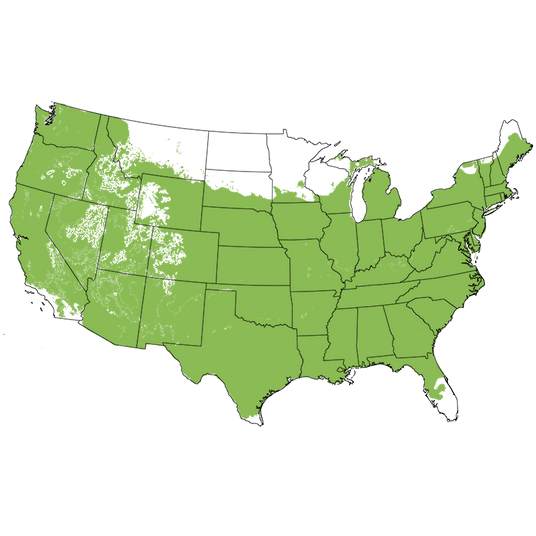
Growing Zones 5-9
Towering Ravennae Grass For Dramatic Height
Soaring Ravennae Grass (Tripidium ravennae) is a statuesque, show-stopping ornamental grass with silvery plumes and sword-like gray-green foliage! Also called Hardy Pampas Grass or Erianthus, this fast-growing perennial grass sends up 12-foot flower stalks in late summer, topped with silvery-purple plumes that fade to tan, waving elegantly into winter.
Ravennae Grass is not considered invasive in most regions! It forms tidy clumps rather than spreading aggressively by rhizomes like true Pampas Grass (Cortaderia selloana). However, it can self-seed in some areas with disturbed soil or unmanaged sites, so deadheading spent plumes before they disperse is a smart garden practice if you're concerned about reseeding. It is not listed as invasive by the USDA or most state-level invasive species councils. Nature Hills utilizes Plant Sentry™ to ensure we remain compliant with all state agricultural regulations.
This warm-season grass grows in tall, upright clumps up to 9-12 feet tall when in bloom and spreads 6-8 feet wide. The stiff, arching foliage emerges green and matures to a blue-gray tone that turns golden-tan in fall. In late summer to early fall, towering flower stalks shoot skyward, each topped with showy, feathery plumes. These persist through winter, catching frost and snow, adding stunning texture and movement to your landscape even in the off-season.
>>Jump to Planting & Care Instructions
Key Features
Once used for weaving and thatching, this grass has found favor as a landscaping marvel for its structure and resilience. A relative of Sugarcane and other tall grasses, it’s ideal for northern gardeners who want tropical vibes without tropical climate needs.
- Giant ornamental grass with upright 9-12 foot plumes
- Gray-green foliage turns golden in fall
- Cold-hardy alternative to Pampas Grass
- Drought and heat-tolerant once established
- Pest and deer resistant
- Zones 5-9
Landscaping Uses
Ravennae Grass brings drama, height, and movement to the garden with its enormous height and feathery texture. With its fountain-like form, upright habit, and autumn interest, it’s the perfect choice for bold garden accents, windbreaks, and screening. Read more about landscaping with this perennial grass.
- Use as a living privacy hedge or windbreak
- Anchor the back of large perennial borders
- Add drama to a xeriscape, Rock Garden, or waterwise garden
- Great for mass plantings
- Striking vertical contrast for foundation plantings or fence lines
- Seasonal privacy screens and property definition
- Adds motion to the landscape or fall sensory garden
Care & Maintenance
Native to southern Europe and western Asia, Ravennae Grass is a hardy alternative to Pampas Grass for colder zones. This herbaceous perennial is a rugged, heat-loving, cold-hardy grass that thrives in full sun and a wide range of soils. It's deer resistant, heat-tolerant, drought-tolerant once established, and thrives in USDA growing zones 5 through 9.
- Planting Time: Spring or early fall. Read how to plant it here!
- Sun Requirements: Full sun is best
- Soil Requirements: Adaptable to most soils, including clay and sandy sites, but prefers well-drained soil
- Moisture Needs: Moderate; drought-tolerant once established (use the Finger Test to check soil moisture)
- Arborist Mulch: Apply a 3-4 inch deep layer of arborist mulch around the base
- Fertilization Needs: Apply balanced slow-release fertilizer in spring; compost improves vigor
- Ornamental Grass Pruning Info: Cut back to 6-12 inches in late winter before new growth emerges. Rake out the interior of debris.
- Division Info: Divide clumps in early spring every 3-5 years to rejuvenate and control spread
- Special Perks/Growing Tips:
- Cold-hardy and heat-tolerant
- Resists pests and deer
- Tolerates clay, urban pollution, and road salt
Reach New Heights with Ravennae Grass
If your garden needs instant height and a bold vertical punch, Ravennae Grass is your go-to. With its waving plumes and tough-as-nails attitude, it's as eye-catching as it is adaptable. Order your Ravennae Grass now and start sculpting your garden with sky-high structure from naturehills.com!

